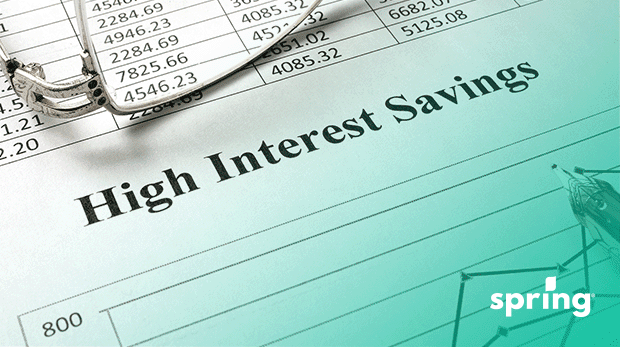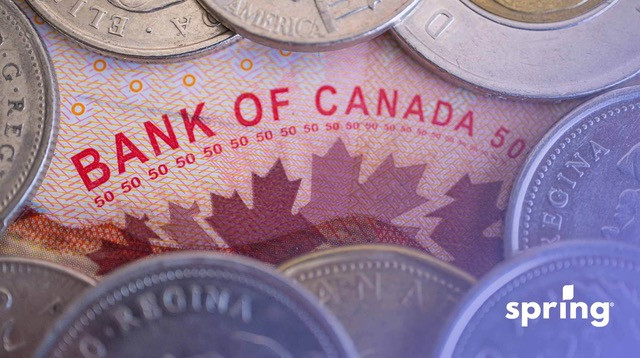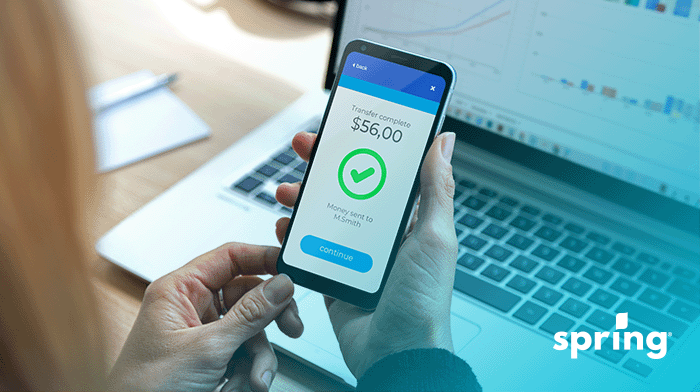ETFs are an excellent way for investors to invest in already diversified portfolios instead of just individual stocks. One of the most popular ETFs out there that investors add to their portfolio is HISA ETFs, which are high-interest savings accounts ETFs that are often considered to be fixed-income products since most offer monthly interest income.
These types of investments aim to track an already diversified portfolio of HISAs. Let’s take a look at how these accounts work and which are some of the best to invest in.
High-Interest Savings Account ETFs to Choose from in 2025
The first step to purchasing an ETF is deciding which type of ETF you’d like to invest in. After that, you then need to pick the ETF. This is the tricky part. There are so many to choose from, and it can be challenging to know which is the right one to choose.
Let’s take a look at some of the best HISA ETF options for 2025 that offer an attractive yield when you invest your cash balances to help offset your riskier investments or just to begin your investment journey.
Evolve High-Interest Savings Account Fund
This type of ETF is ideal for investors looking for liquid short-term investments. It’s a low-risk fund that seeks exposure to high-interest savings accounts. One of the most popular things about this fund is that it has a monthly distribution frequency, allowing investors to receive regular payments.
The Evolve High-Interest Savings Account Fund has been around since November 2019. It has a cash asset class and can be invested in registered accounts. The management fee on this particular fund is 0.16%. The current annual distribution yield is 3.36%.
Horizons High-Interest Savings ETF
The Horizons High-Interest Savings ETF is another type of ETF to consider. Like many other ETFs, this one is also considered to be very low risk, and it can be invested into a registered account. Instead of being listed as a HISA ETF, though, the ticker on this fund is cash. It’s also relatively new since it’s only been around since November 01, 2021.
Some important things to consider regarding this ETF are that the management fee is 0.10%, and the management expense ratio is 0.11%. Just like other ETFs, the net assets do vary, but the current net assets are $6,821,410,787 and are traded in Canadian currency. The annual distribution yield is 2.55%, and the distribution frequency is monthly.
CI High-Interest Savings ETF
Another excellent option for a low-risk ETF is the CI High-Interest Savings ETF. It has been around since 2019 and is popular among investors looking for fixed-income ETFs that generate a monthly cash flow. Its ticker is listed as CSAV, which is different from the other ETFs we’ve discussed, and it has a total net asset value of $5.83 billion. The current management fee of this fund is 0.14%, with an MER of 0.15%. The net yield of this fund is 2.53%.
Purpose High-Interest Savings ETF
The purpose high-interest savings ETF has some unique features. It has no hidden transaction fees, no lock-up periods and no minimum balances. It has daily liquidity, and the interest earned is calculated daily but paid monthly. Unlike other funds, this one allocates assets to HISAs as Schedule 1 banks. However, they also allocate assets to Bank of Canada treasury bills (also referred to as government bonds) as long as the Canadian government’s credit backs them.
As for the specifics of the ETF itself, the management fees are 0.15%. They have a gross yield of 2.79% and a net yield of 2.62%.
iShares Premium Money Market ETF
The iShares Premium Money Market ETFs aim is to provide liquidity, current income, and capital preservation. Many investors choose it because it offers exposure to high-quality securities, specifically short-term debt securities.
This ETF has a low-risk rating. The management fee is 0.12%, and the MER is 0.13%. It has been around since 2008 and is considered to be a Canadian money market fund. The income distribution is monthly, and the capital gains distribution is annual.
Horizons 0-3 Month T-Bill ETF
What’s interesting about the Horizonz 0-3 Month T-Bill ETF is that it’s a low-risk ETF that’s formed by investing in short-term T-Bills with the Government of Canada. In fact, it’s also backed by the Canadian Government. Since this fund involves government T-Bills, it’s much lower risk than other interest-bearing investments.
Another intriguing factor about this particular fund is that it can be traded at any time. It’s also expected to earn more monthly than other funds like bank deposits and cashable GICs. Here are some facts regarding the fund itself.
This is a new fund since it has an inception date of April 13, 2023. The total net assets are $1,743,82-,548 and the MER is 0.11%. The distribution frequency for this ETF is monthly, the annual yield is 3.31% and the management fee is 0.10%.
BMO Money Market Fund ETF
The BMO Money Market Fund ETF is another ETF that includes T-Bills. This fund specifically provides exposure to high quality money market instruments that are issued by governments and corporations in Canada. This doesn’t only include treasury bills though. It also includes banker’s acceptances and commercial paper. It’s important to note that the instruments that are selected for this fund mature in less than a year and an average of 90 days.
Before you invest, though, it’s important to note that this investment might not be the best choice for everyone. It’s designed for those who are wanting high levels of liquidity as well as capital preservation.
The current net assets for this fund are $5,084.16M and the maximum annual management fee is 0.12%. The current MER is 0.13%. This fund also has an inception date of November 29, 2021, a monthly distribution frequency and an annualized distribution yield of 0.36%.
Purpose Cash Management Fund
The Purpose Cash Management Fund is managed by Purpose Investments. It’s meant to be a short-term investment vehicle to help you grow your wealth. It focuses on high quality money market investments and has competitive yields. Like many other funds it’s actively managed and provides daily liquidity. The interest rate is calculated daily and paid monthly.
This fund currently has $2.1 Billion in assets under management. The management fee is 0.20%, the gross yield is 2.93% and the net yield is 2.71%.
Ninepoint High Interest Savings Fund
The Ninepoint High Interest Savings Fund is another type of investment vehicle that investors use to get a better rate of return. It has no term commitments, daily liquidity, and is simple to add to any portfolio. This fund specifically invests in high interest savings accounts that are offered at Schedule 1 banks in Canada as well as other market securities that are considered to be high quality.
For the fund the annualized distribution yield is 2.81%. It has an inception date of August 6, 2010 and has a minimum initial investment of $500. The minimum subsequent investment amount is $25.
Horizons USD Cash Maximizer Corporate Class ETF
While the Horizons USD Cash Maximizer Corporate Class ETF is also considered to be low risk, it’s a little different than the other Horizons ETF. This ETF actually mostly invests in US dollar accounts with Canadian chartered banks. Due to this, it gets a higher interest rate than traditional savings accounts. Like many other funds, it can be sold at any time during the trading day and doesn’t have any minimum holding periods or trading amounts.
This fund is also not expected to make taxable distributions. This means that it’s likely to enhance the tax performance of this fund compared to others. With that though, the main goal of this fund is to seek modest capital growth.
It holds net assets of $750, 956,515 and has a management fee of 0.18%. The MER is 0.20%. It also has a gross yield of 4.10% and an inception date of July 2, 2020.
HISA Vs Cash ETFs
As an investor, it’s important to know the difference between High-Interest Savings Accounts and Cash ETFs. There’s actually quite a large difference. HISAs are deposit accounts that offer more competitive interest rates than traditional savings accounts while still allowing you to use the funds whenever you like. Cash ETFs are investment funds that aim to replicate the returns that you would see from a HISA. That said, neither of these options is good or bad. They just each have their own positives and negatives.
The reason that many people choose to use HISAs is that they offer higher returns, are simple to use, and allow access to the funds at any time. They are a popular choice for those who don’t want to risk their money and also intend to use it. That said, though, the returns you get from a HISA are smaller than those from other investment accounts. They also tend to charge fees and have minimum balance requirements.
Cash ETFs are beneficial to investors because they can maximize monthly income since the returns can be higher than a HISA, but they also allow liquidity since they can be bought and sold anytime on the stock market (in Canada, this would be the Toronto Stock Exchange). You may not have access to the funds instantly as you would with a HISA, but it’s usually no more than a few business days.
The one thing you have to remember with Cash ETFs, though, is that they aren’t guaranteed returns since there are constant market fluctuations. What you earn and what you lose is based on the market, and it can be volatile. That said, when you invest, you can choose your risk tolerance as well as how much you wish to invest and where you want to invest the funds.
What are Cash Alternative ETFs?
Cash Alternative ETFs are also considered as an alternative to High Interest Savings Account ETFs. Their goal is to provide returns that are similar to short-term fixed-income securities. They do this by maintaining a diversified portfolio of short duration instruments that are also high-quality. The idea behind this type of ETF is to help investors who are looking for liquidity, capital preservation, consistent cash-flow, and funds that are low risk.
Purchasing ETFs with Large Canadian Banks
When it comes to High-Interest Savings ETFs, many major banks like RBC, TD, and BMO don’t allow you to purchase the ones we’ve listed above with them. Each of these banks offers its own high-interest savings fund, money market funds, money market ETFs or mutual funds. If you choose to invest with either of these banks, then you’ll have to go with those.
These aren’t the only banks to choose from when investing primarily in ETFs, though. Other major financial institutions, such as Scotiabank, CIBC and National Bank, will allow you to purchase the funds that we’ve listed above. You can also open a brokerage account with an online brokerage to purchase them, which often has lower fees.
Risks of Purchasing These ETF Funds
When it comes to purchasing funds, the largest risk is that your money isn’t protected. If you have your funds invested with a financial institution with a GIC, HISA or other type of investment, then your funds are protected up until $100,000. This is because these financial institutions have their funds protected by the CDIC, Canada Deposit Insurance Corporation.
While HISA ETFs are considered to be low-risk and often provide you with a good return, they also aren’t protected like a HISA, which is something to consider.
Online Brokerages to Purchase ETFs
In Canada, there are a variety of online brokerage firms that allow you to invest in ETFs. Most people think these types of investments have to be done through large Canadian banks, but they don’t.
In fact, also smaller private banks and credit unions that also allow you to purchase these. It’s also important to keep in mind that no matter where you purchase an ETF, these funds aren’t covered by the CDIC or any other government deposit insurer.
If you’re interested in using an online brokerage to start investing in the best HISA ETFs Canada has to offer, then take a look at the online brokerage firms listed below.
Interactive Brokers Canada
Interactive Brokers is a popular online brokerage in Canada that allows trading a variety of different securities including ETFs. Plus, since the point of investing is to earn money from interest payments and other sources, the fact that they have low fees is a bonus. They also have some other great features including the ability to invest globally in stocks, and other securities.
One of the best things about using Interactive Brokers is the education they provide regarding investing. Since values change frequently, it’s important to do your research before you invest capital into securities. They give you access to a variety of information including past performance, performance data, annualized historical yields, and more.
When it comes to Interactive Brokers, they pride themselves on being a broker that you can trust. They have a NASDAQ listing of IBKR, an equity capital of $17.5B, are 72.4% privately held, have $12.4 B in excess regulatory capital, over 3.34M client accounts, and have 3.52M in average daily revenue trades.
Qtrade
Another popular online brokerage that has low trading fees is Qtrade. One of the largest draws to them is the no-commission ETFs. Not only that, they offer industry leading tools to help you educate yourself on the best trades, and how to earn money with investing. They’ve also been ranked Canada’s #1 platform 28 times in the past 18 years. This platform can be used online or using your mobile device.
Another cool fact about Qtrade is that they’ve been ranked as the $1 online broker for client services 8 times in the last 6 years. They even have different tools and investing options depending on your investing experience. This can help you with anything from income taxes payable to service fees and even expenses payable.
When it comes to ETFs, Qtrade has over 100 commission free ETFs. However, in order for it to be commission free, you do have to hold it in your account for a minimum of one business day. Other than that, the fee is $8.95 per trade if you have an Investor account, and $6.95 per trade if you have an Investor Plus account.
Questrade
Questrade also offers some great options when it comes to investing. For those who are interested in self-directed investing, you can start trading with $0 commissions. For those who prefer a more hands off approach and prefer a portfolio manager, you can get a pre-built portfolio that has management fees starting at just 0.25%. The fee is 0.20% for amounts $100,000 or over.
Another great feature regarding Questrade is that it is 100% Canadian owned. What’s even more amazing is that they have been in the market for 26 years. They currently have $50 Billion in Assets Under Management and offer a variety of different securities besides ETFs, including Cash Deposits otherwise known as Cash Investments.
If you decide to use this platform, you don’t have to be a certain type of investor. They have services for retail investors and more. Plus they have different accounts to choose from in order to maximize your investment needs. While you can’t future events, Questrade makes a particular point of giving you the tools you need to make the most informed decisions possible.
Wealthsimple Trade
Another low fee and no commission trading platform is Wealthsimple Trade. They offer a wide variety of self-directing investing options and tools for every trade level. No matter what trade account you have though, there are $0 commissions for all accounts. That said, there are 3 different account options: Core, Premium and Generation. Each of these different accounts has its own unique features.
Core accounts are for accounts with as little as $1 in assets. Along with the $0 commission stock trading, they also have management fees of 0.5% on managed investing accounts and you can get 1.75% on your chequing account balance. Once you get up to $100,000 in assets these benefits will change because you will be upgraded to the Premium account.
The Premium account offers 0.4% management fees on managed investing accounts. You also get a rate of 2.25% on your chequing account balance. Some added features you get with this account are access to financial advice, up to 3 partner awards (this depends on the assets you hold) and complimentary USD accounts as well as reduced options trading and crypto fees. You’ll then be upgraded to Generation when you reach $500,000 in assets.
The Generation account includes all of the benefits that you get with the Premium account as well as some extras. You can get a rate of 0.2%-0.4% on managed investing accounts, earn 2.75% on your chequing account balance, access to financial advice and access to 3 partner rewards. Those with assets in excess of $200,000 will also have access to rewards from trusted Wealthsimple partners.
That said, this is really just the surface of what Wealthsimple offers. They have a variety of different products as well as investment options. They also have support that’s readily available and access to a variety of different educational tools.
Canadian HISA ETF With the Highest Returns
While all of the ETFs we’ve mentioned are considered to be the best high-yielding ETFs, only one of them is considered the best. The ETF that is considered to have high-yields that are larger than the rest is the Horizons Cash Maximizer ETF. That said, though, it doesn’t offer consistent monthly income like the other HISA ETFs do. It isn’t the only Horizons ETF, either. They also have the Horizons High-Interest Savings ETF. Unlike other ETFs, Horizons has the most in the HISA ETF market.
GIC Vs HISA
When it comes to other types of investing instead of High-Interest Deposit Accounts ETFs, you have many options, but two of these options are Guaranteed Investment Certificates (GICs) and High-Interest Savings Accounts (HISAs). What exactly are the differences? Well, let’s take a look.
GICs
GICs, also known as Guaranteed Investment Certificates, are investments that are considered low risk because they offer a guaranteed return over a fixed rate of time. These types of investments are most commonly issued by deposit-taking institutions, which include trust fund companies, banks and credit unions, and are protected by CDIC insurance. These are typically used by investors as a way of preserving capital.
The thing about these types of investments, though, is that your funds are locked. You’re unable to access these funds without a penalty. If the funds are left in the account, then you can collect your return at the end of the term.
Another thing to consider is the rate of return. GIC rates are much lower than other types of investments. Once you lock into a GIC, even if they start to offer higher interest rates, your interest rate won’t change since you were locked in at the current prevailing interest rates. This means that you could be earning less interest than the rate of inflation. How they pay the interest is based on the type of GIC you invest in, as well as the term. They could either pay out annually or monthly.
When it comes to investing in GICs, there are a few different asset classes of ETFs to choose from, including:
- Market Growth GICs
- Cashable GICs
- Non-Cashable GICs
- Fixed Rate GICs
- Escalator GICs
- Variable Rate GICs
HISAs
Like GICs, High-Interest Savings Accounts are a good fit for short-term Canadian investors looking to use the funds within 1-5 years. With HISAs, you can earn a higher interest rate on your funds without having to lock them in. You have access to these funds whenever you want to use them. With that in mind, though, there is a very low rate of return. If you want to save your money long-term, then a HISA isn’t always the way to go.
Like GICs, any funds that are in a High-Interest Savings Account are protected by the CDIC up to $100,000. In the case of a bank failure, then you won’t lose your funds.
When it comes to earning interest on your HISA, the amount you receive is based on how much is in your account and the rate you agreed to. This rate is then calculated daily and then paid out monthly to the entire balance of your account. It’s important to note that just because an account is called an HISA doesn’t mean it has a good rate. Do your research to find the best rate you can.
Best Morningstar ETF in Canada
When looking to purchase ETFs, one of the most important things you can do is to do your research. Morningstar is one of the companies that provides research regarding different security investments, including ETFs, and gives recommendations regarding which are the most ideal to invest in.
When it comes to the Best ETF to invest in Canada, the ETF that earns the Morningstar Gold Medalist rating is the Vanguard S&P 500 ETF. Keep in mind that this isn’t a short-term investment recommendation, though. These recommendations are based on forward-looking perspectives. It’s based on the ETF’s overall likelihood to perform.
This fund specifically looks to track the performance of a US Equity index that measures the return on investment from large-cap US stocks. It actually invests directly in US stocks. The reasons that investors are attracted to this stock have a lot to do with the fact it uses efficient index management techniques and has a passively managed strategy. The fund itself has a management fee of 0.8%, MER of 0.9%, and a quarterly distribution frequency.
It’s important to keep in mind that this type of ETF is for more high-risk investors. It’s not low-risk like HISA ETFs. That said, though, when investing at all, it’s important to look for research and make informed decisions on your investments.
Final Thoughts
When it comes to investing in Canada, there are plenty of options out there to choose from. What and how you choose to invest depends on your individual circumstances, as well as if you have long-term or short-term plans for the funds. This will drastically influence your investing options. This is because short-term investments are ideal for GICs and HISAs. You earn a small return on these while only having your funds put away for the short term.
If you’re looking to invest more long-term and want to invest in registered accounts, this is where ETFs and other securities come into play. That said, HISA ETFs can be invested short-term or long-term. Depending on the one you choose. It’s important to remember that with these types of ETFs, your funds aren’t guaranteed like they would be with a GIC or HISA. They also have a lower rate of return than higher-risk investments. What you get in refund also depends on the trading day you cash them in. Since these funds are on the stock market, they do fluctuate from day to day.
With all of this in mind, choosing where to invest can be hard. If you’re having a hard time deciding what to do with your money, then it may be a good idea to talk with a financial advisor. They can help you with your short-term and long-term financial goals, helping you based on what your investment objectives are, and create an investment strategy. They can also help you to determine the best high-quality liquid assets.









